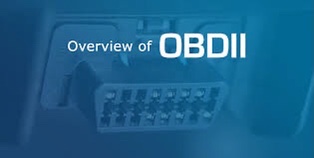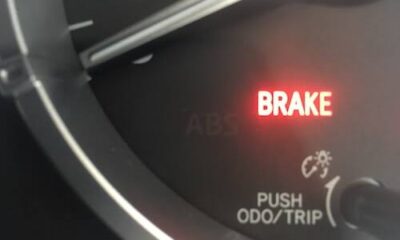WHEELSCLINIC
What is On-Board Diagnostic systems

On-Board Diagnostic systems are in most cars and light trucks on the road today. During the ’70s and early 1980’s manufacturers started using electronic means to control engine functions and diagnose engine problems. This was primarily to meet EPA emission standards. Through the years on-board diagnostic systems have become more sophisticated. OBD-II, a new standard introduced in the mid-’90s, provides almost complete engine control and also monitors parts of the chassis, body and accessory devices, as well as the diagnostic control network of the car.
Where’d it come from?
To combat its smog problem in the LA basin, the State of California started requiring emission control systems on 1966 model cars. The federal government extended these controls nationwide in 1968.
Congress passed the Clean Air Act in 1970 and established the Environmental Protection Agency (EPA). This started a series of graduated emission standards and requirements for maintenance of vehicles for extended periods of time. To meet these standards, manufacturers turned to electronically controlled fuel feed and ignition systems. Sensors measured engine performance and adjusted the systems to provide minimum pollution. These sensors were also accessed to provide early diagnostic assistance.
At first there were few standards and each manufacturer had their own systems and signals. In 1988, the Society of Automotive Engineers (SAE) set a standard connector plug and set of diagnostic test signals. The EPA adapted most of their standards from the SAE on-board diagnostic programs and recommendations. OBD-II is an expanded set of standards and practices developed by SAE and adopted by the EPA and CARB (California Air Resources Board) for implementation by January 1, 1996.
Why do we need it?
The Environmental Protection Agency has been charged with reducing “mobile emissions” from cars and trucks and given the power to require manufacturers to build cars which meet increasingly stiff emissions standards. The manufacturers must further maintain the emission standards of the cars for the useful life of the vehicle. OBD-II provides a universal inspection and diagnosis method to be sure the car is performing to OEM standards. While there is argument as to the exact standards and methodology employed, the fact is there is a need to reduce vehicle emitted pollution levels in our cities, and we have to live with these requirements.
Does my car have OBD-II?
All cars built since January 1, 1996 have OBD-II systems. Manufacturers started incorporating OBD-II in various models as early as 1994. Some early OBD-II cars were not 100% compliant.
There are five basic OBD-II protocols in use, each with minor variations on the communication pattern between the on-board diagnostic computer and the scanner console or tool. While there have been some manufacturer changes between protocols in the past few years, as a rule of thumb, Chrysler products and all European and most Asian imports use ISO 9141 circuitry or KWP2000. GM cars and light trucks use SAE J1850 VPW (Variable Pulse Width Modulation), and Fords use SAE J1850 PWM (Pulse Width Modulation) communication patterns. CAN is the newest protocol added to the OBD-II specification, and it is mandated for all 2008 and newer model years.
You may also tell which protocol is used on a specific automobile by examining the connector socket carefully. If the dash connector has a pin in the 7 position and no pin at 2 or 10, then the car has the ISO 9141 protocol or KWP2000. If no pin is present in the 7 position, the car uses an SAE protocol. If there are pins in positions 7 and 2 and/or 10, the car may use the ISO protocol. The CAN protocol uses pins 6 and 14.
While there are OBD-II electrical connection protocols, the command set is fixed according to the SAE J1979 standard.
-

 AVIATION5 years ago
AVIATION5 years agoPhoto News: Air Peace commence flight operations to South Africa
-

 Car News5 years ago
Car News5 years agoPolestar is recalls over 2000 electric cars due to software bug
-

 RAIL5 years ago
RAIL5 years ago36 Killed in Pakistan Train Accident
-

 Technology5 years ago
Technology5 years agoCommon mistakes in CO₂ emissions calculations
-

 Business5 years ago
Business5 years ago2016 Volvo XC60 review and specifications
-

 Reviews5 years ago
Reviews5 years ago2021 Audi A6 Specifications and Review
-

 Reviews3 years ago
Reviews3 years agoDebutant Kia’s new K8 sedan benchmarks luxury, safety
-

 SAFETY / CAR CARE5 years ago
SAFETY / CAR CARE5 years agoHandbrake warning light; what it means and what to do
